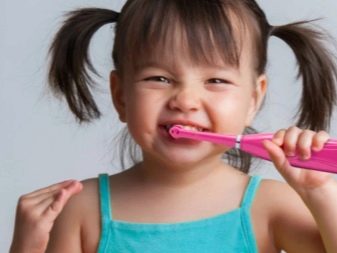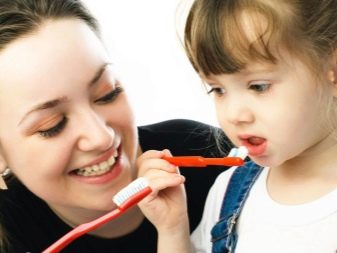How to properly brush teeth for children?
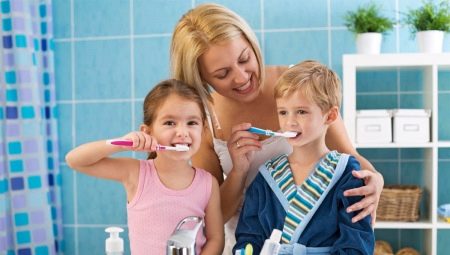
Young parents should think about the hygiene of the baby's oral cavity even at the stage of his infancy: already at this time the child should receive the necessary procedures. Of course, no one crawls into the mouth of a three-month-old baby with a brush, but as soon as the teeth "hatch", it's time to do them.
Fundamental rules
It is interesting that milk teeth are formed on the sixth week of intrauterine development: normally there should be 20. Milk teeth are temporary, but they consist of the same tissues as permanent ones - pulp, dentin, enamel. True, milk teeth have low crowns, a large distance between the latter, long thin roots (they literally dissolve before falling out) and very thin enamel.
Since the structure of milk teeth does not differ globally from the structure of permanent ones, the first teeth need full-fledged care. As soon as the first incisor appears, the baby can begin to brush the teeth.
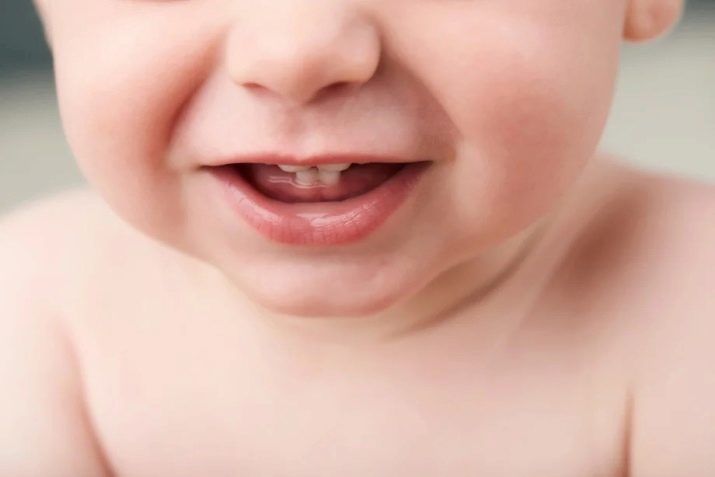
The main rules for parents.
- Immediately after leaving the hospital, the mother should monitor the baby's oral hygiene: the baby's gums should be gently wiped with a thick gauze swab, previously moistened with warm water. Instead of water, you can use an infusion of chamomile, a decoction of St. John's wort or calendula. But herbal infusions are not used constantly, but once or twice a week.
- When the child has teeth, you can start brushing them. But no toothpaste is needed at this stage. It is useful to buy a special soft baby brush for a "toothy" baby and use it to process not only the teeth, but also the gums. If you don't want a brush, you can buy a silicone pad - it fits on your mom's or dad's finger.
- The first cleaning is very gentle.The gums around the erupting tooth are usually inflamed, so touching can be painful for the baby. But it is also impossible to refuse cleaning: during eruption, local immunity decreases, which means that bacteria will act more aggressively.
- It is better for children, even from infancy, to brush their teeth twice a day. And preferably at the same time. Kids are very attached to the regime, to automation, to the usual way. Therefore, the cleaning procedure should not be spontaneous, but inscribed in the baby's daily routine.
- In time, brushing takes 1-2 minutes maximum, because the child still has few teeth and a small mouth.
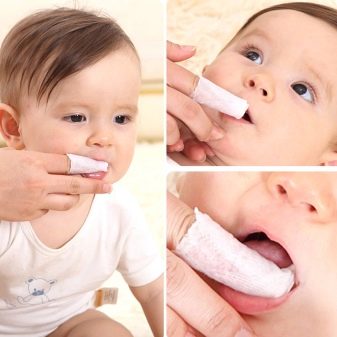
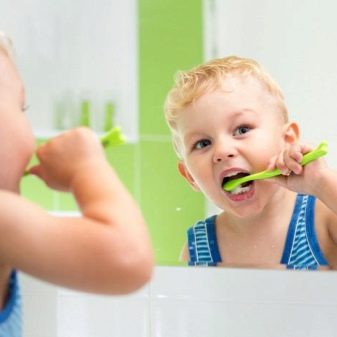
Conclusion: the best option for a baby is a silicone pad, which cleans the enamel and massages the gums. And the first brush may appear after a year, and the option with silicone villi will be optimal. Closer to the age of two, the child has the first classic children's toothbrush.
Cleaning technique up to a year
Read more about how to deal with babies. All actions are careful and very careful. The child should be calm with the parent, the procedure should be carried out in a comfortable environment, accompanying the actions with various sweet and soothing words.
In one child, teeth appear at 4 months, 6 months, 8 - for everyone in different ways. But usually, by 10-11 months, the child confidently has several teeth (2 lower incisors, exactly, in most cases). If the baby, while still a newborn, received a gentle massage with a cotton swab, he is unlikely to be afraid of cleaning. Therefore, for a full-fledged procedure for brushing teeth with a brush and paste, a small child at 1 or a year and a half will be completely ready if the mother has always looked after his teeth.
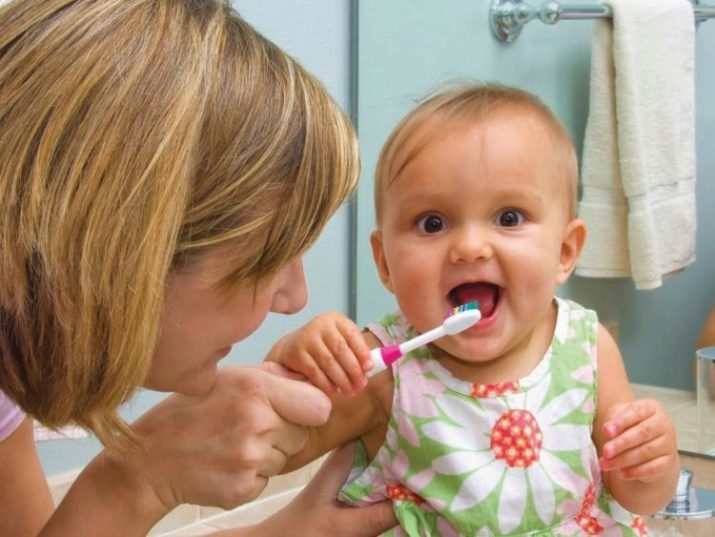
How to clean teeth and gums for a baby up to one year old:
- you need to make movements from the root to the top;
- Mom's finger with a silicone attachment should be held at an angle of 45 degrees;
- the processing of the upper planes requires horizontal holding of the nozzle, it is necessary to move along the tooth progressively;
- from the inside, the enamel is cleaned with short finger movements.
- the side walls are cleaned in a circular motion.
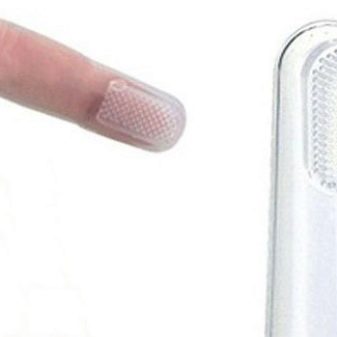
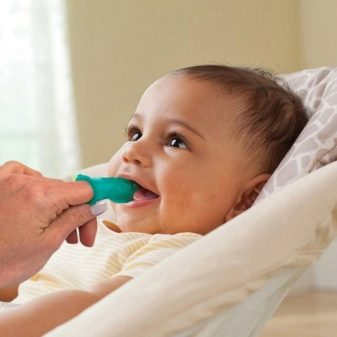
There are approximately 10-12 movements per tooth. With proper cleaning, not only the enamel part of the tooth is processed, but also the gums, the mucous membrane of the inner part of the cheeks and the tongue. An alternative to the silicone tip can be special dental wipes, which are sold in pharmacies.
Attention! Some mothers are sure that babies do not need brushing their teeth, because breast milk has everything to protect the baby from diseases. And from bacteria that "attack" the teeth after eating - too. But this is not the case. Milk does not cleanse the oral cavity, it has no such purpose.
After breastfeeding, as well as after the mixture, you can only clean the oral cavity with napkins, a tampon or a nozzle. It may not be worth doing this every time, but in the morning and in the evening it is a must.
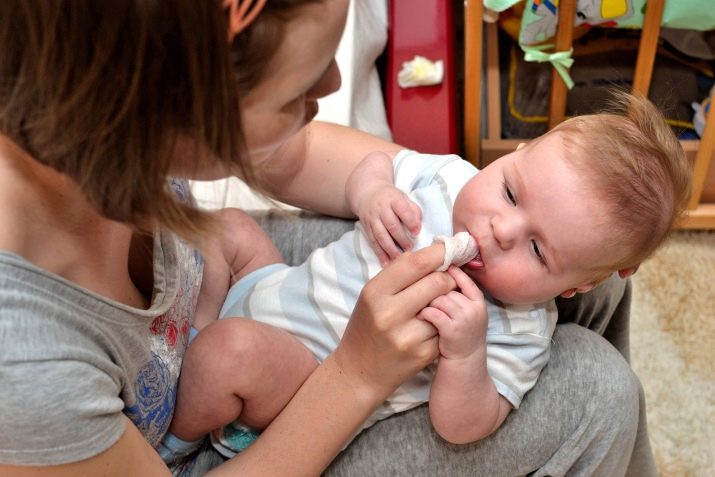
How to clean plaque in children 2 or older
Almost always, a child gets acquainted with toothpaste at the age of 2: dentists recommend focusing on this age mark. There are formulations that are designed for younger children, they do not contain fluoride, they are safe, but, of course, not suitable for everyone. Young children will swallow or spit the paste as soon as it enters their mouth. Therefore, conscious cleansing begins after reaching the age of two, when it is already possible to agree with the child.

Standard cleaning scheme.
- The brush should be moistened in warm water. A small piece of paste should be squeezed onto the moistened pile. Usually enough so that it takes up a third or half of the pile area, you don't need much.
- At an angle of 90 degrees, the cleaning instrument should be brought up to the crowns.
- Tooth enamel should be cleaned from the roots to the top, as if the person wants to sweep the dirt off the tooth surface. This, in fact, is roughly what he does.
- From the inside, the teeth are cleaned with short strokes, the brush will already be moved to an angle of 45 degrees.
- The cutting and chewing surfaces of the teeth are treated last.
- When completing cleaning, you need to rinse your mouth thoroughly with warm clean water.
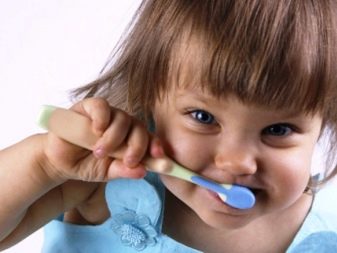

If a balm is used, it completes the mouthwash. Then you need to wash the brush itself, which should also teach the baby from an early age.
To say that a two-year-old child will be happy to do cleaning and will do it according to all the rules, of course, it is impossible. Until about three years old, he will open his mouth, and his parents will clean. As soon as it becomes clear that the child is ready to take seriously the order to brush his teeth himself, he is given freedom of action. But strictly under parental control and with the correction of all not very correct movements.
It is imperative that a parent show the ritual of brushing their teeth on themselves. Most of all, kids love to copy, which means that the sacred action of an example has not been canceled.
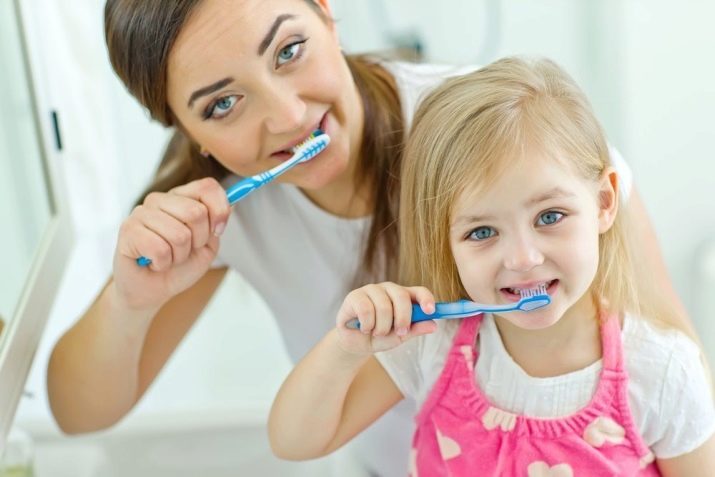
10 Things Parents May Not Know About
- A child's toothbrush should be changed every 3-4 months. Even the best and most expensive.
- Independent dental care should be started at the age of 2.5 years. Emphasis on the word "start": by about three years, the baby will do it confidently.
- Up to a year, every child should visit the dentist at least once. Even if there are no teeth yet. After all, the doctor assesses not only their condition, but also the health of the oral cavity as a whole.
- So that the baby does not get lost in the cleaning process, does not finish the procedure earlier than required, he needs a timer. An ordinary hourglass will work too. Today special timed brushes are sold that signal when cleaning should be completed.
- From an early age, a child should understand that a brush, a glass should only be individual.
- It is imperative to treat milk teeth if they are "attacked" by caries. This is beyond doubt. Often, the treatment takes about 5 minutes, unless, of course, the process is started. The child should not be afraid of the dentist's office - if you correctly select the clinic and the doctor for the first trip, positive emotions will be fixed, and the person will not know what fear is at the dentist's office.
- In some countries there is such a tradition: if a child does not try to brush his teeth, eats a lot of sweets, does not want to go to the doctor, the Tooth Fairy does not give him a gift. A tooth fell out, and in the morning there was not money on the dresser, but a letter, where it is politely but strictly written that the fairy “cannot give the respected Petya, because he improperly brushes his teeth, eats sweets out of measure and will not make friends with the dentist.”
- When the teeth change, the child can react with stress to it. For example, to be afraid that a lost tooth will swallow. If parental reassurances that it is not scary do not help, you need to go to a good dentist for a consultation. And at 5, and at 7, and even at 9 years old, a child needs advice from a cheerful pro who will colorfully tell how cool it is - changing teeth - and why it is not scary at all.
- And such a doctor will tell a teenager that not very beautiful teeth are temporary, that the jaw grows and everything will fall into place. And if you don’t get up, there are many cool and not scary ways to fix it.
- In kindergartens, in grade 1, the child also brushes his teeth. Parents should find out how responsibly the child does it outside of their control.
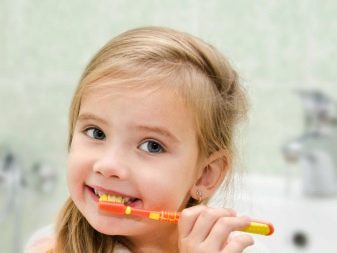

Can I use an electric brush?
From about three years old (not earlier), the electric brush is actually available for use. But in this case, the parent should only carry out cleaning. Children's enamel is very thin, very sensitive. The brush head rotates, pulsates, and this can harm the enamel layer of milk teeth. If a microcrack forms, then bacteria will settle there, and then caries.
Consider what electric brushes for children are on the market today.
- Classic. This is a housing equipped with a motor, which has a round head with a pile. The nozzle rotates at a predetermined speed, effectively removing plaque and food debris.
- Sound. Such a brush not only rotates, but also makes certain vibrations, which removes pathogens from the enamel surface more thoroughly.
- Ultrasonic. Winner, efficiency category. Ultrasonic waves destroy the film created by pathogens, and they do it better than mechanical cleaning.
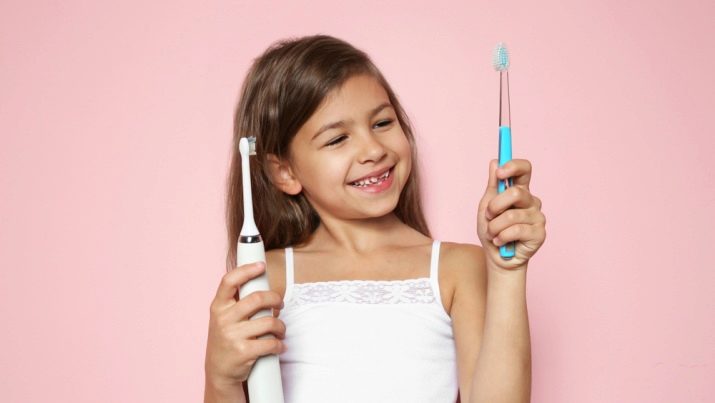
Of course, the cleaning technique is simplified with a power tool. The child should conditionally divide the oral cavity into 4 segments: upper left, upper right and lower left and right parts. A moistened brush with a drop of paste is applied at an angle of 45 degrees, and then it starts to work on its own. Each site takes about half a minute. But a child will be able to fully brush his teeth with an electric brush by the age of 6, and then only if the parent is sure of the correctness of his actions.
The conclusions are simple: there is no right time to start brushing your teeth. Already a newborn child needs a mother to gently and affectionately treat his gums with a special silicone nozzle or a dental napkin. By the age of two, the child is confidently familiar with the brush, and at three he begins to brush his teeth himself.
If a culture of oral care is present in a child's life from infancy, parents will make a huge and important contribution to dental health for life.
